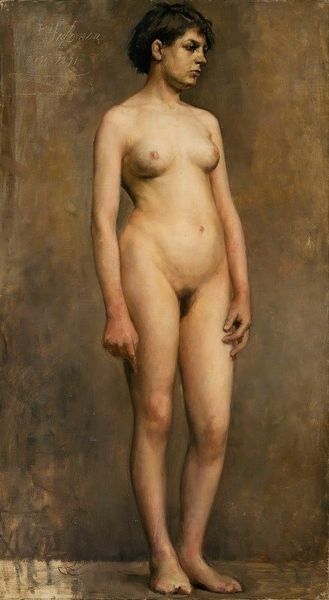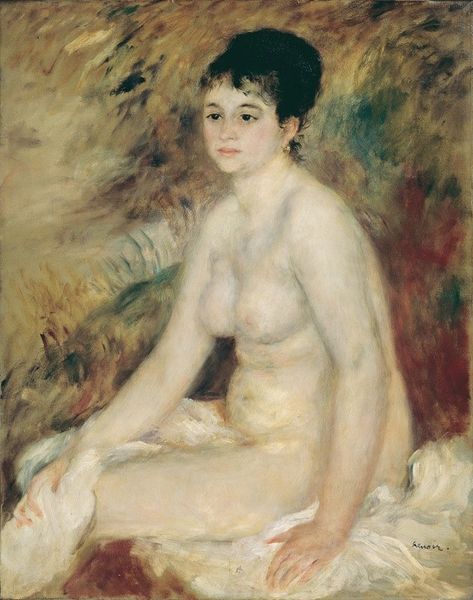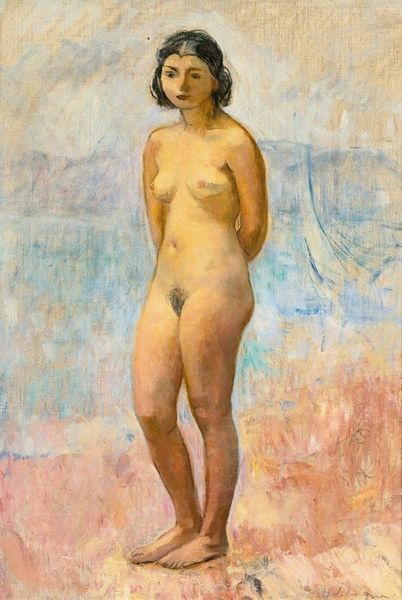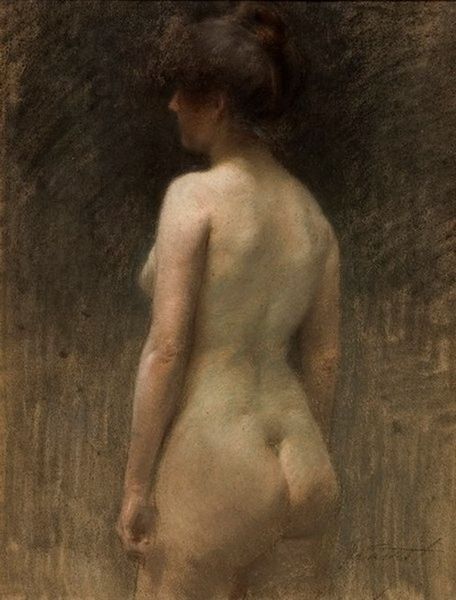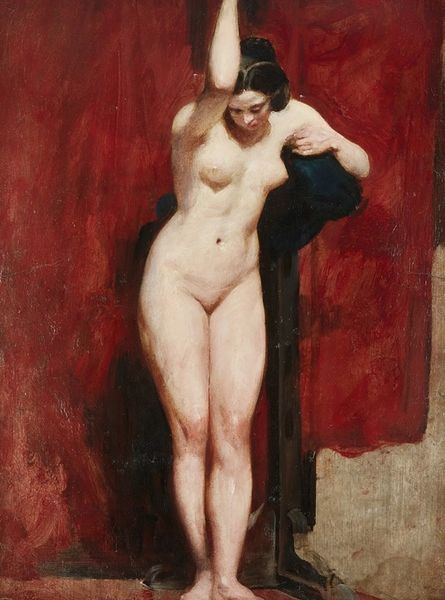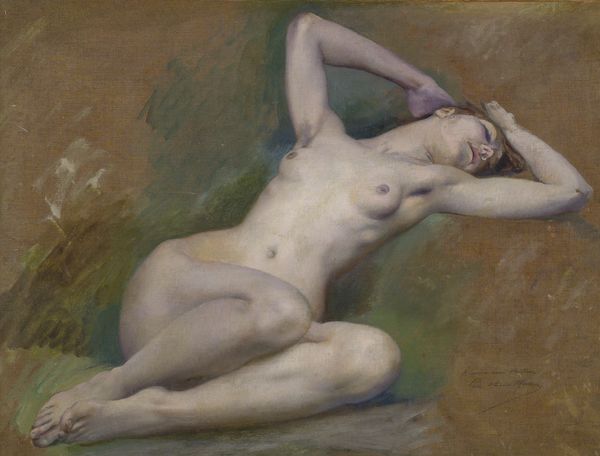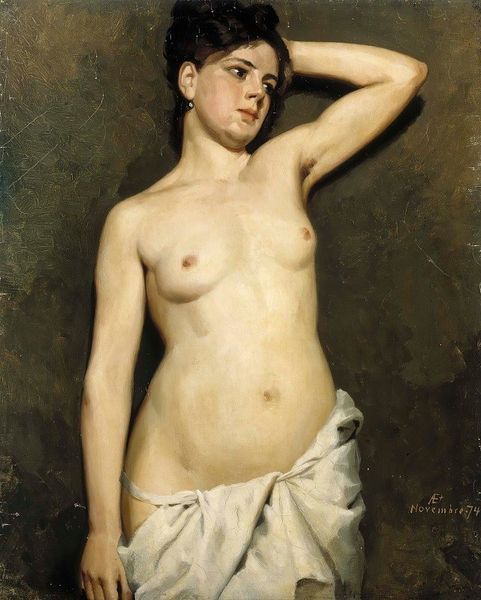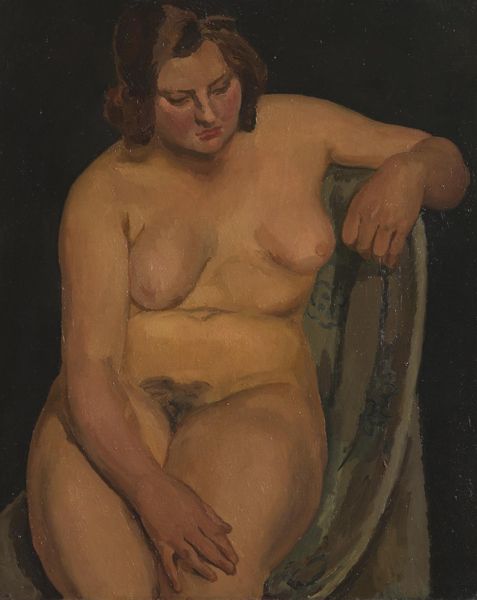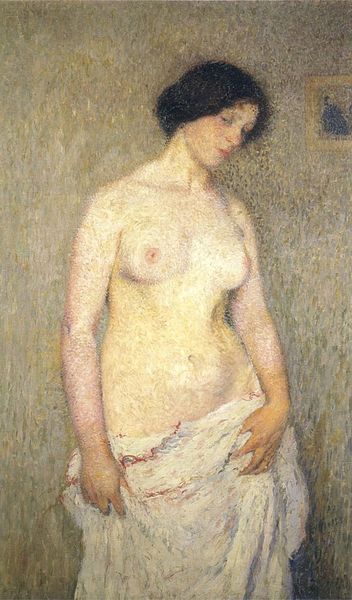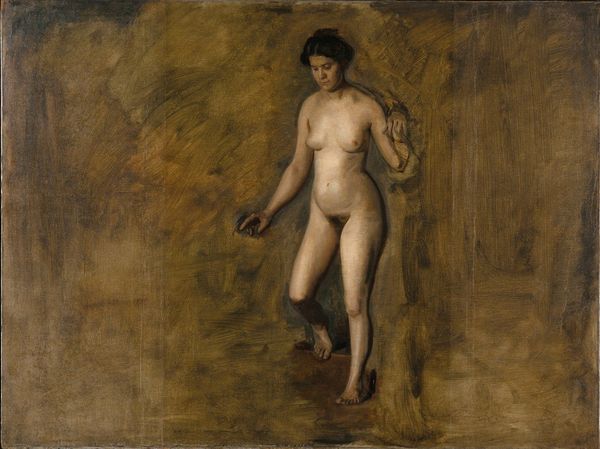
Dimensions: 30 x 25 1/4 in. (76.2 x 64.14 cm) (canvas)37 1/2 x 32 1/4 x 2 1/2 in. (95.25 x 81.92 x 6.35 cm) (framed)
Copyright: No Copyright - United States
Curator: Lovis Corinth's "Nude Girl," painted in 1886 and currently residing here at the Minneapolis Institute of Art. Corinth rendered it with oil paint on canvas. Editor: Immediately, I'm struck by its quietness. There's a somber mood conveyed by the muted palette and the subject's averted gaze. It lacks the bold confrontational sensuality often found in nude studies. Curator: Indeed, the restricted tonal range— predominately greys and ochres—contributes to this hushed effect. Observe how Corinth employs broad, visible brushstrokes, foregoing smooth, academic polish. This directness emphasizes the materiality of the paint itself. The slightly rough texture enhances the impression of a transient moment captured. Editor: I see what you mean. It seems to echo archetypal images of vulnerability and introspection. Nudes often serve as powerful vessels for cultural projections of femininity and desire. Curator: Certainly, yet here the symbols appear understated. Rather than mythological allusions or idealized beauty, Corinth focuses on the play of light across the model's form, creating a subtle dance between visibility and shadow. Consider, for example, the way the illumination defines the curvature of the shoulder. Editor: Right, there is a definite modesty or melancholy— the downcast eyes almost invite empathy for a timeless experience of self-consciousness and being looked at. Curator: Perhaps Corinth, rather than simply representing the figure, aimed to investigate perception itself? Through the reduction of color and emphasis on painterly gesture, he invites us to reflect on how we perceive and interpret the human form. Editor: So, we're left not with a mere likeness, but a meditation on seeing and being seen. A rather different kind of study in contrast with familiar traditions. Curator: Precisely, and a powerful illustration of how even seemingly straightforward subjects can be approached through a lens of deep material engagement.
Comments
minneapolisinstituteofart almost 2 years ago
⋮
Born in East Prussia, Lovis Corinth spent almost the entirety of his training and career in Munich and Berlin. However, from 1884-87 the artist - who aspired to be a history painter - studied in Paris at the Académie Julian under the two celebrated artists, Tony Robert-Fleury and Adolphe William Bouguereau. Their teaching focused on life drawing - an approach that was particularly suited to the large figural compositions of history paintings. This life study is one of approximately twenty paintings - mostly nudes - that survive from Corinth's Parisian sojourn.
Join the conversation
Join millions of artists and users on Artera today and experience the ultimate creative platform.
